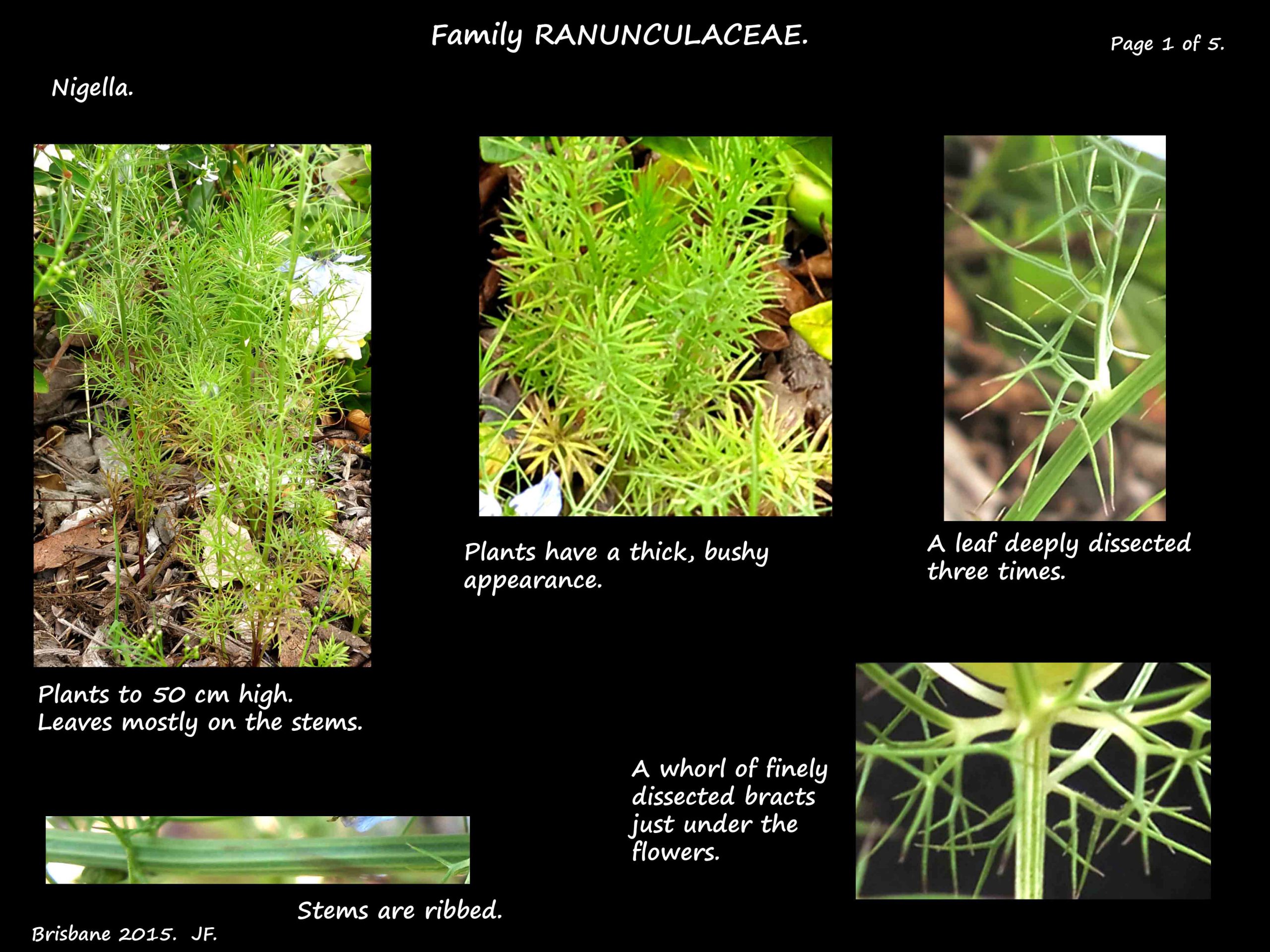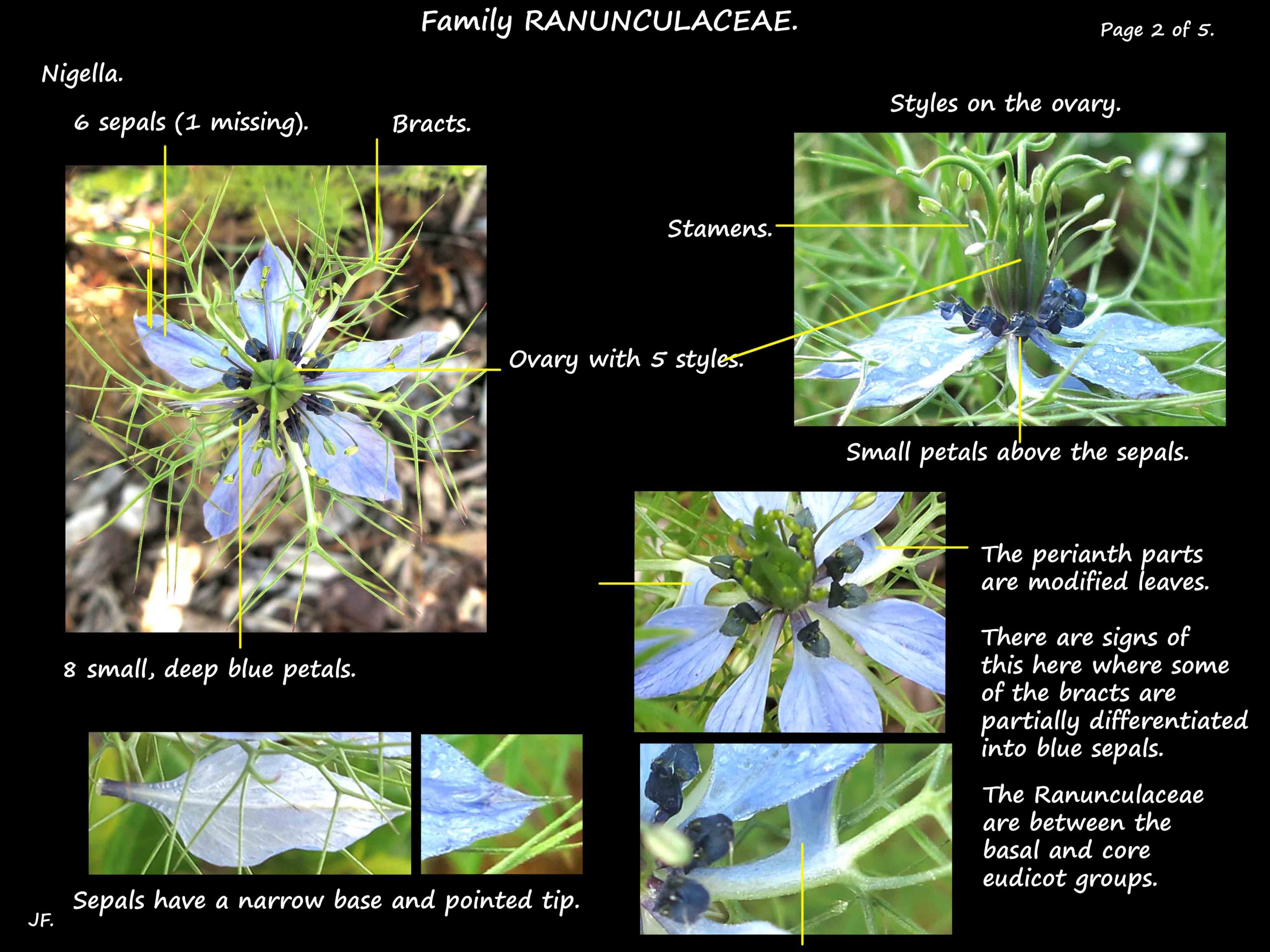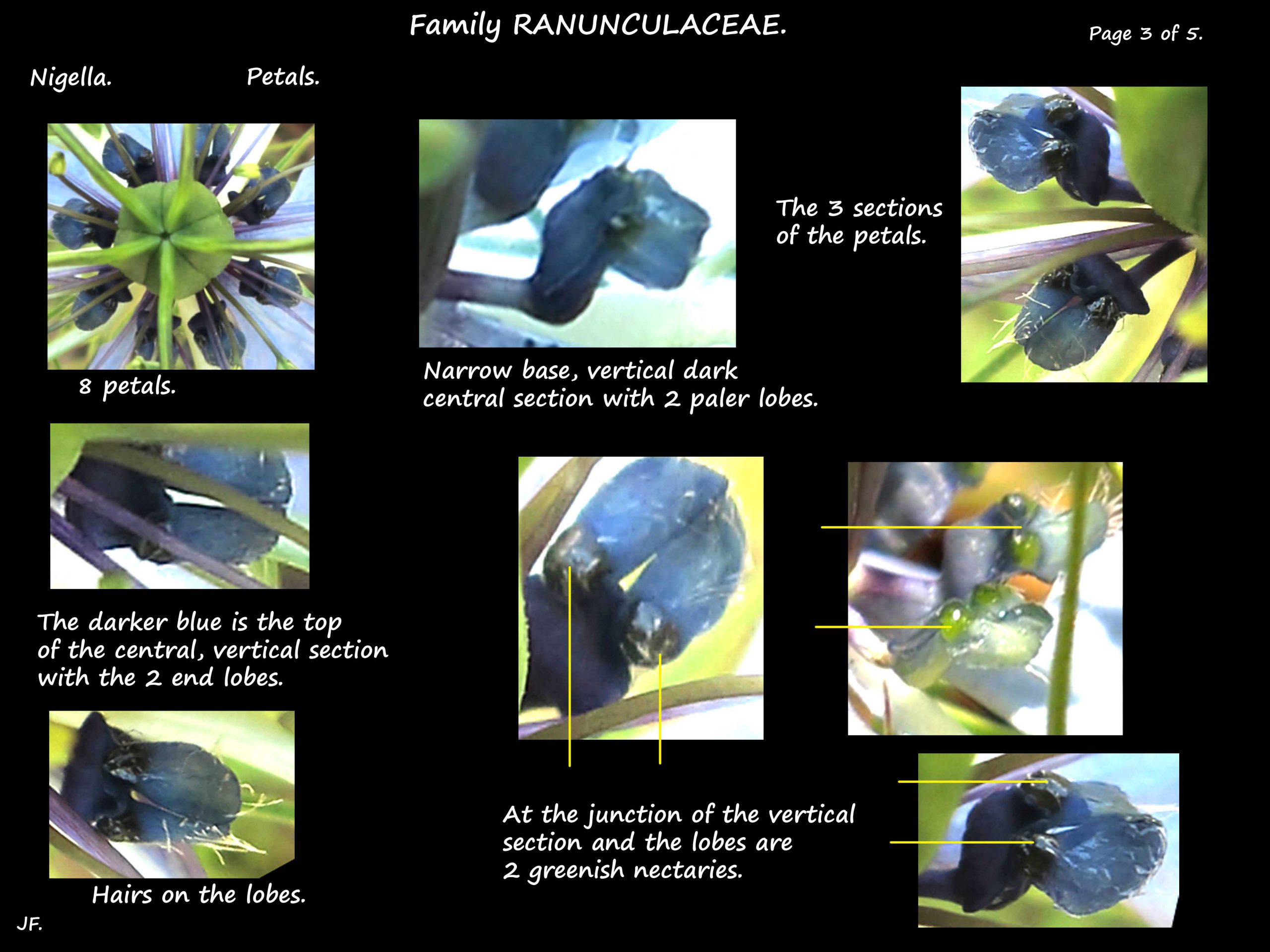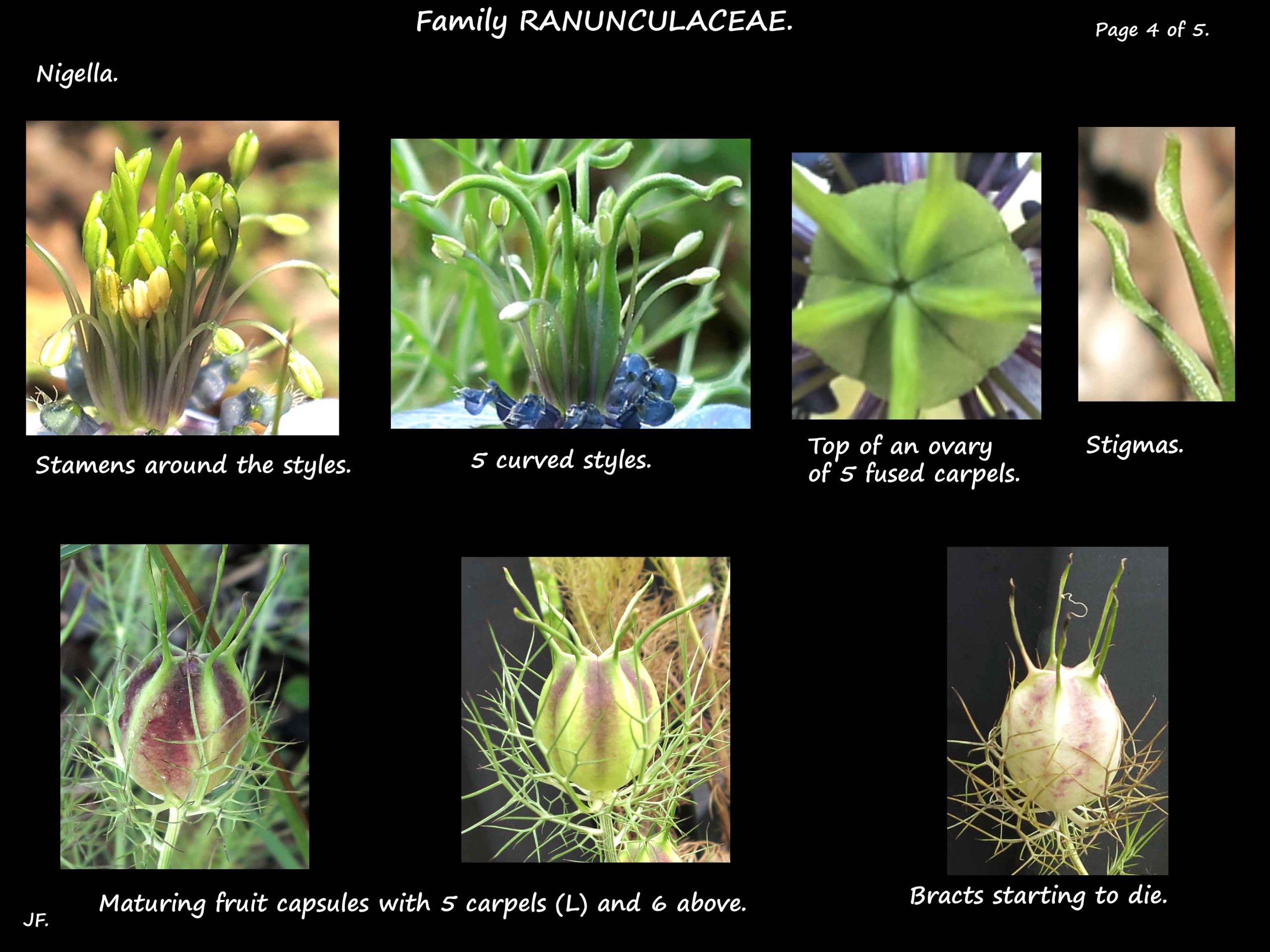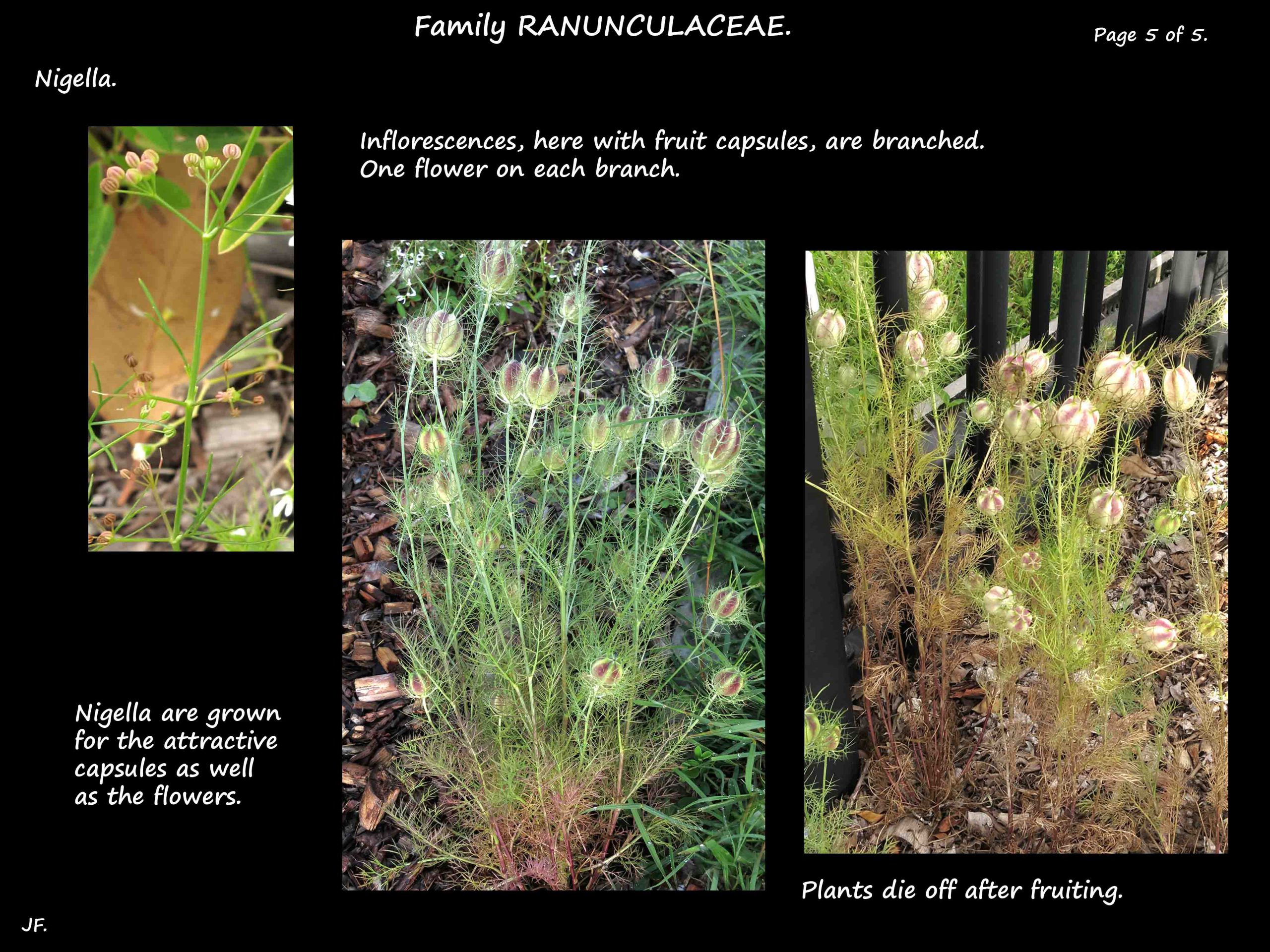Nigella.
Family Ranunculaceae.
There are about 15 species of mostly annual herbs up to 50 cm high.
Alternate, spirally arranged leaves are basal and/or along the stems.
The blades are deeply dissected, up to 3 times, into long, terminal linear segments.
This gives the leaves a feathery appearance and makes the plant thick and bushy.
The segments have no teeth.
Inflorescence stems are branched with each branch holding a solitary terminal flower.
Immediately under the flower is a whorl of involucral bracts.
Typically 5, they are pinnately dissected into narrow terminal segments.
They remain on the fruit for a long time.
The perianth typically has 5 sepals and petals.
The 4 cm wide flowers are mainly blue or white.
The larger sepals are petal-like with a narrow base, expanded blade and a pointed tip.
The greatly reduced petals are only a few mms long.
They are ‘z’ shaped with a narrow horizontal base.
The broader middle vertical section has 2 small yellowish nectaries at the top.
The terminal horizontal section consists of 2 small lobes with long white hairs.
The 13 or more stamens have anthers opening via longitudinal slits.
The superior ovary consists of 5 (or more) fused carpels.
Each carpel has a style with a slightly lobed stigma.
The styles are initially erect but then arch or bend outwards.
The fruit are inflated capsules up to 2 cm long with as many chambers as there are carpels.
Initially green and red they become dry and brown then rupture.
There are many seeds in each chamber.
Common species are Nigella damascena (Love-in-a-mist) seen as a garden plant and the
similar Nigella sativa (black cummin) grown for its seeds.
Plants can now be found with single to double flowers in blue, white, pink, red or mauve.
There are also some multi-coloured ones.
J.F.
